“World Memory, Peaceful Vision - Exhibition on the Historical Facts of the Nanjing Massacre” Opens in Madrid, Spain

Guests present at the exhibition pose for a group photo
At 3 pm local time on October 26, “World Memory, Peaceful Vision - Exhibition on the Historical Facts of the Nanjing Massacre” kicked off at IFEMA Palacio Municipal in Madrid, Spain, the first of its kind in the country. More than 80 people attended the opening ceremony. Among them were He Yong, minister counselor for cultural affairs of the Chinese Embassy in Spain; Marcelo Munoz, chairman emeritus of Catedra China; Zhou Feng, director of the Memorial Hall; and representatives from all walks of life in Spain and the media.
The exhibition, with the theme “World Memory and Peaceful Vision”, consists of three parts: “The Calamity in Nanjing”, “Justice Trial”, and “The City of Peace”. The exhibition features more than 100 historical pictures, and 19 objects, 10 original and nine copies, displayed to narrate historical facts from the atrocities committed by Japanese invaders in Nanjing to the international tribunal’s trials of Japanese war criminals. At the same time, the exhibition showcases what Nanjing has done to promote peace as an “International City of Peace”, conveying to the international community the Chinese people’s aspirations to remember history, cherish peace, and create a better future, keep to the path of peaceful development, and build a community with a shared future for mankind.
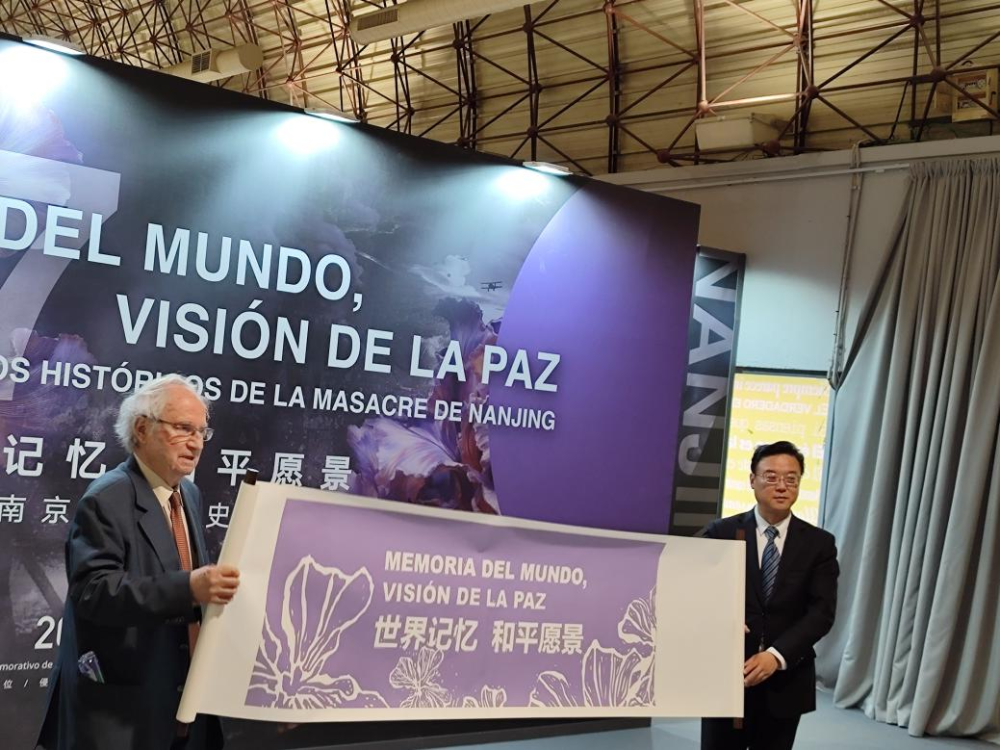
The exhibition highlights reports from Western media including Spain’s El Diluvio, as well as diaries and letters kept by some Westerners, in an attempt to relate history rationally and objectively from a third-party perspective. Meanwhile, the exhibition seeks to resonate with Spanish audiences by showcasing the connection between Spain and China in their fight against Fascism during World War II.
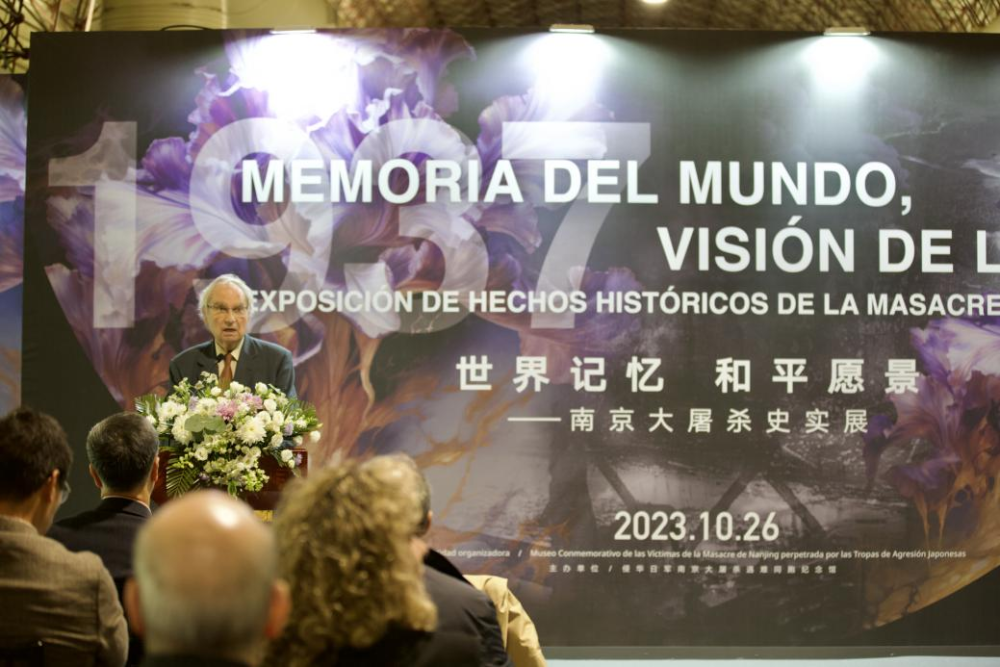
Marcelo Munoz, chairman emeritus and founder of Catedra China, gives a speech
In his speech, Marcelo Munoz, chairman emeritus and founder of Catedra China, said China made significant sacrifices and contributions to the victory of the World Anti-Fascist War. “While commemorating the end of World War II, we have neglected the deep suffering brought by this war in Asia as well. I hope to do my best to eliminate this historical injustice and pay tribute to the millions of Asian victims, especially the victims of the Nanjing Massacre.” Marcelo added that China advocates remembering history in a peaceful, just way, which he has felt many times while in China, so that the crimes committed will not be forgotten and repeated again. Rafael Cascales Sisniega, president of the Spain China Tourism Association, visited the exhibition. Rafael said the Nanjing Massacre is a tragedy that both Chinese and Spanish people must remember, and everyone should not forget that history so that the tragedy never happens again.
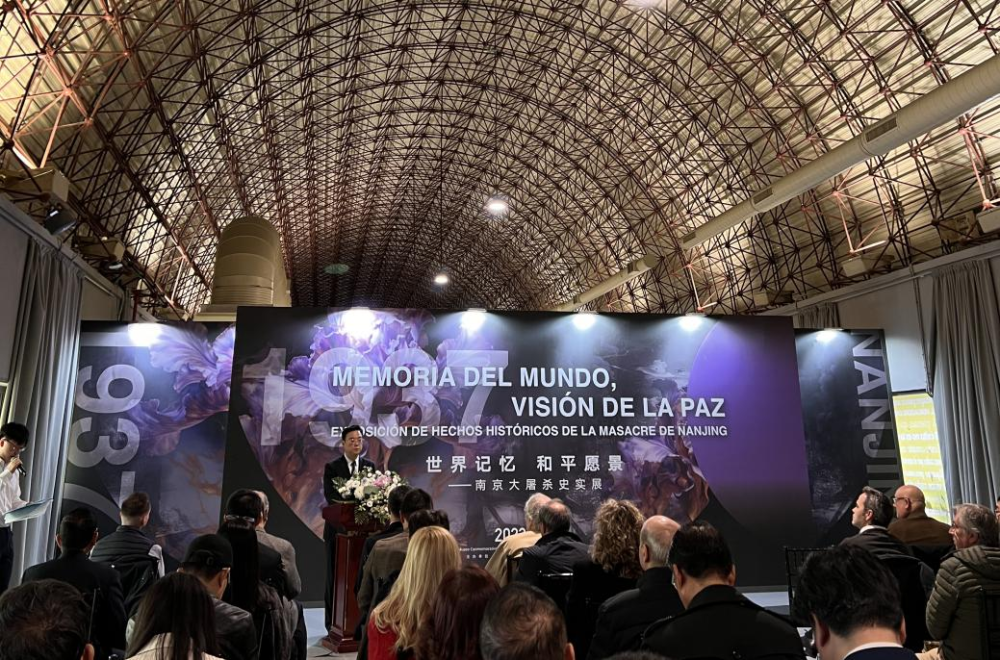
Zhou Feng, director of the Memorial Hall, gives a speech
“War is like a mirror, allowing people to better understand the value of peace. The theme of this exhibition aims to rekindle people’s yearning and commitment to peace through the memory of history. Madrid is known for the “Gate of Europe.” Through the gate, we hope that this exhibition can help the people of Spain understand the vision of the Chinese people in building a community with a shared future for humankind and connect the historical memories and common future of the two peoples,” said Zhou Feng, director of the Memorial Hall.
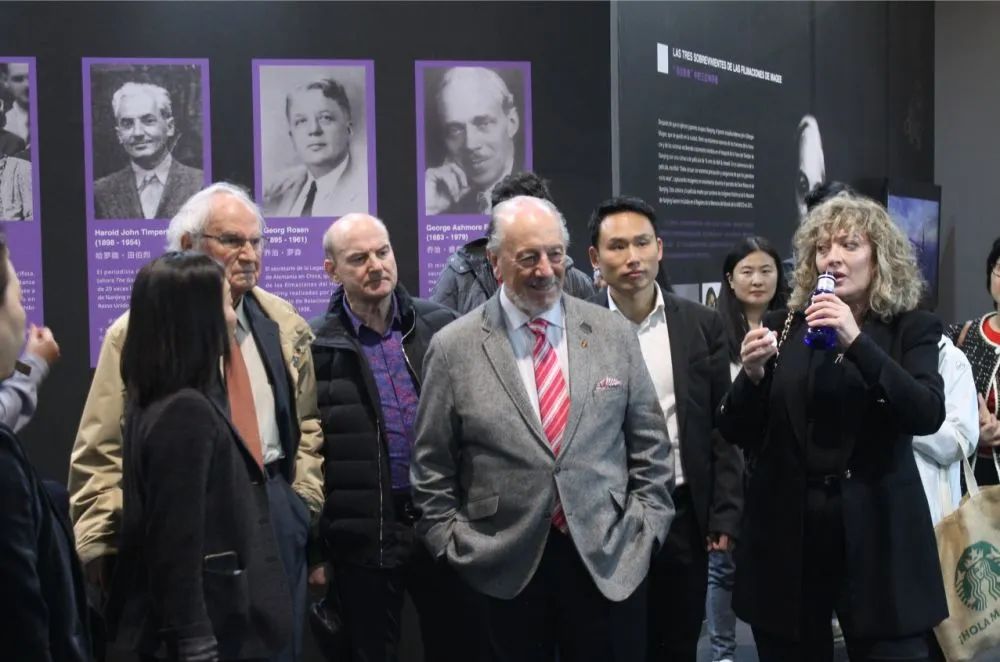
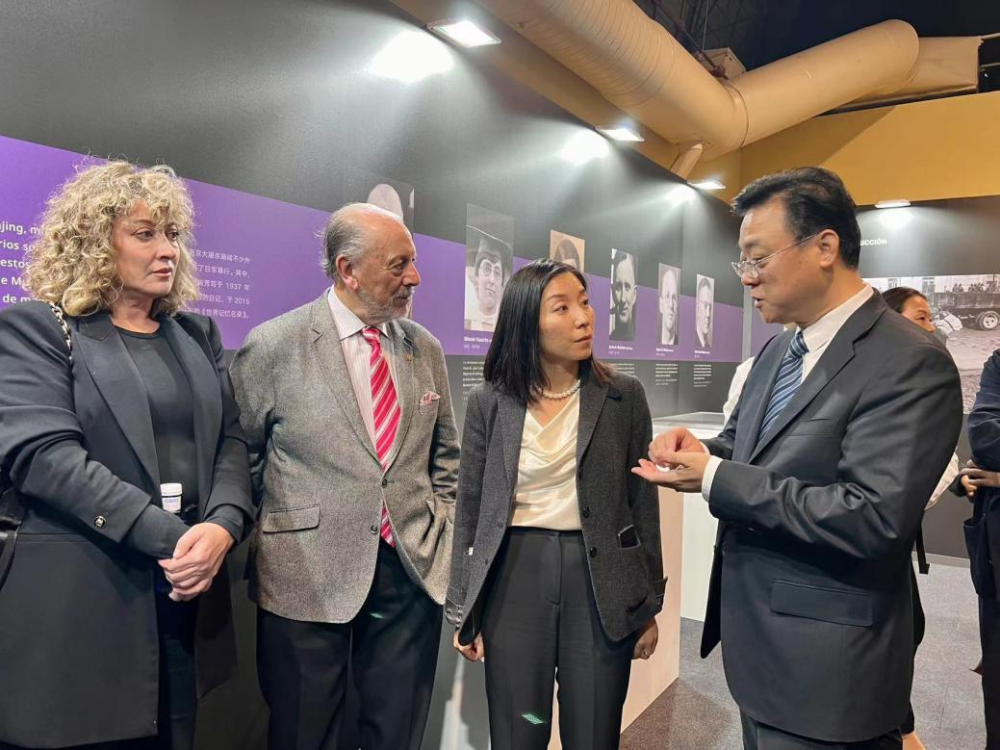

Guests visit the exhibition
On October 9, 2015, the Nanjing Massacre became a world memory as UNESCO added Documents of the Nanjing Massacre to its Memory of the World Register. So far, the Memorial Hall has held exhibitions in a number of cities, including Los Angeles in the United States; Moscow in Russia; Florence in Italy; Manila in the Philippines; Caen in France; Minsk in Belarus; Prague in the Czech Republic; and Aarhus in Denmark.
Source: The Xinhua News App Editor: Zhou Xuanting

